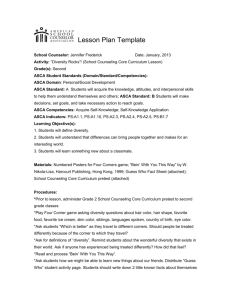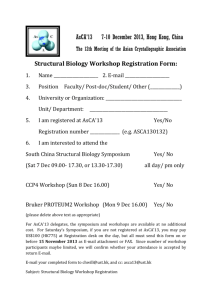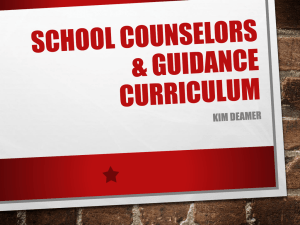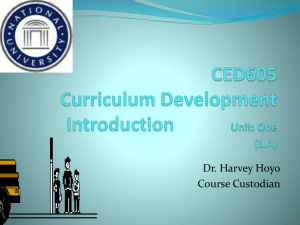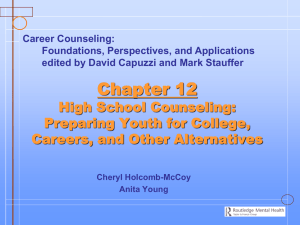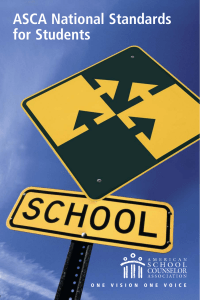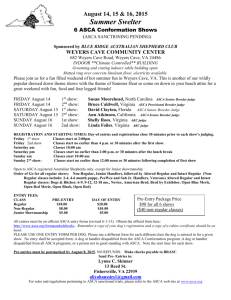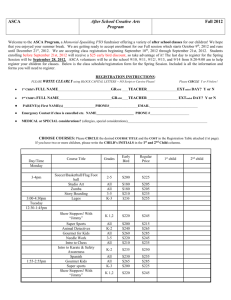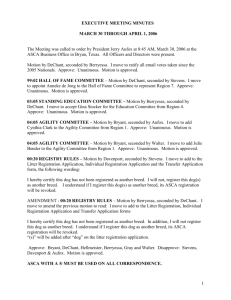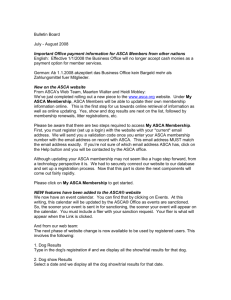solving randomly
advertisement
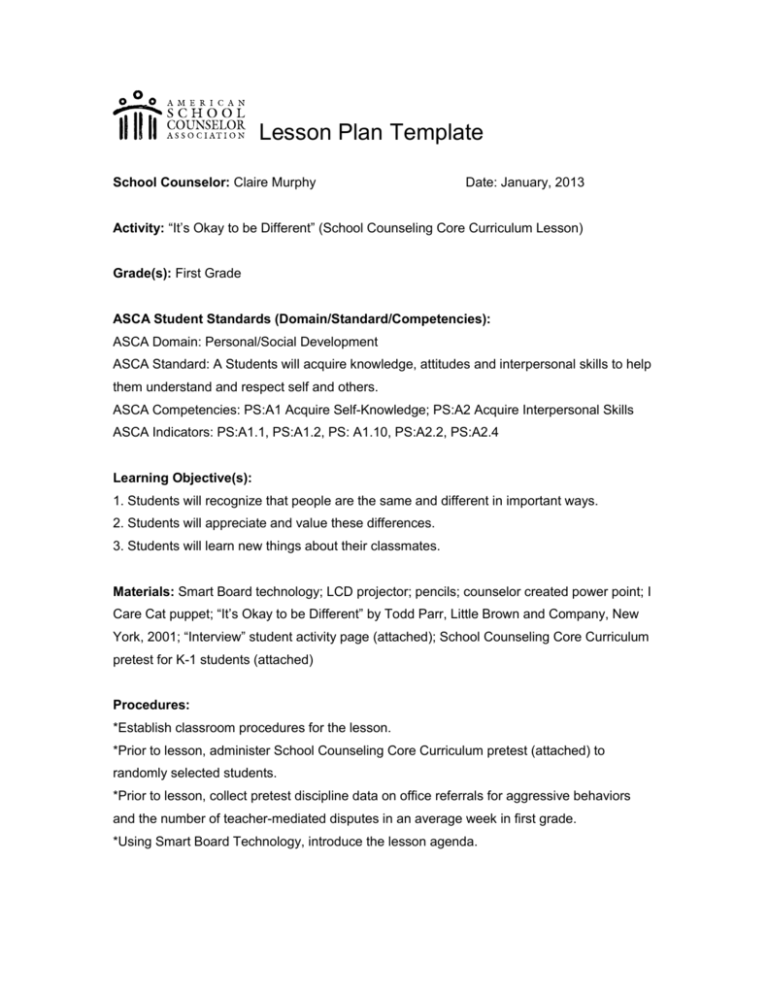
Lesson Plan Template School Counselor: Claire Murphy Date: January, 2013 Activity: “It’s Okay to be Different” (School Counseling Core Curriculum Lesson) Grade(s): First Grade ASCA Student Standards (Domain/Standard/Competencies): ASCA Domain: Personal/Social Development ASCA Standard: A Students will acquire knowledge, attitudes and interpersonal skills to help them understand and respect self and others. ASCA Competencies: PS:A1 Acquire Self-Knowledge; PS:A2 Acquire Interpersonal Skills ASCA Indicators: PS:A1.1, PS:A1.2, PS: A1.10, PS:A2.2, PS:A2.4 Learning Objective(s): 1. Students will recognize that people are the same and different in important ways. 2. Students will appreciate and value these differences. 3. Students will learn new things about their classmates. Materials: Smart Board technology; LCD projector; pencils; counselor created power point; I Care Cat puppet; “It’s Okay to be Different” by Todd Parr, Little Brown and Company, New York, 2001; “Interview” student activity page (attached); School Counseling Core Curriculum pretest for K-1 students (attached) Procedures: *Establish classroom procedures for the lesson. *Prior to lesson, administer School Counseling Core Curriculum pretest (attached) to randomly selected students. *Prior to lesson, collect pretest discipline data on office referrals for aggressive behaviors and the number of teacher-mediated disputes in an average week in first grade. *Using Smart Board Technology, introduce the lesson agenda. *Bring out I Care Cat puppet and have the puppet ask students to stand if they can answer “Yes” to a series of questions: Are you 6 years old? Do you have black hair? Are you wearing a skirt? Do you have any sisters? Do you have grandparents? Do you like pizza? *Process student answers and observe that students differ from each other. *Remind students that it is okay to be different. Variety is the spice of life! *Read and discuss “It’s Okay to be Different” by Todd Parr. *Distribute “Interview” student activity page (attached). Allow students to spend several minutes interviewing and recording the answers given. *Collect interviews and make a book about the variety in the class. Plan for Evaluation: How will each of the following be collected? Process Data: *Count the number of students attending this lesson. Perception Data: *Prior to lesson, administer School Counseling Core Curriculum pretest assessing student attitudes, knowledge, skills in the areas of appreciating differences, point of view, conflict resolution, problem-solving, and bystander responsibilities to randomly selected first grade students. Outcome Data: Prior to the lesson, collect pretest discipline data on the number of office discipline referrals for aggressive behaviors, and the number of teacher-mediated disputes in first grade. Follow Up: Collaborate with other counselors when posttest perception and outcome data is collected to evaluate effectiveness of the School Counseling Core Curriculum Action Plan. Person You Interviewed________________________________ Directions: Get with a friend, interview each other, and find out what makes you both special. Write their answers after each question. 1. What is your favorite food? 2. Does your family have a cute name they call you? 3. What is something you do really well? 4. What do you want to be when you grow up? 5. Have you ever been to another country? 6. If you could be any animal, what would you be? Pre Post Test K-1 Guidance Curriculum Action Plan 2013 1. I feel safe when I am in my classroom. Yes Super Yes No Super No 2. I feel safe when I am on the playground. Yes Super Yes No Super No 3. I feel safe when I am on the bus. Yes Super YES! No SUPER NO! 4. Which does not belong in problem solving? a. Use your brain b. Use your words c. Use your feet d. Use your ears 5. What would you do if someone snatched away a toy from you? a. Yell at them. b. Grab the toy back. c. Ask them to give it back. d. Cry. e. Do you have a different idea? 6. What would you say if you and a friend both wanted to go first in a game? 7. When you say an I Message to someone you are trying to: a. Make them sad. b. Make them angry. c. Solve a problem with them. d. Make them scared. 8. We sometimes have problems with others because: K a. We don’t share. b. We don’t use our words. c. We don’t remember to be nice. d. We disagree with them. e. All of these answers are correct. 9. Can you tell me a good friendship rule to follow?
